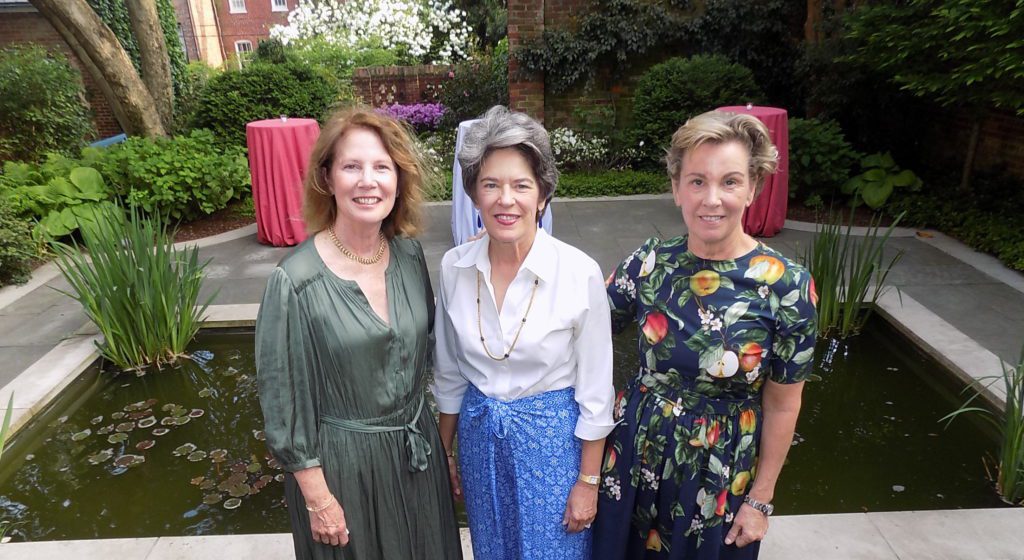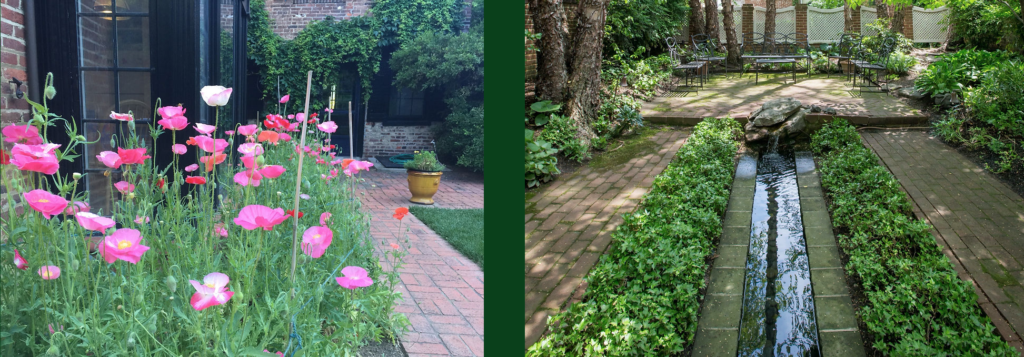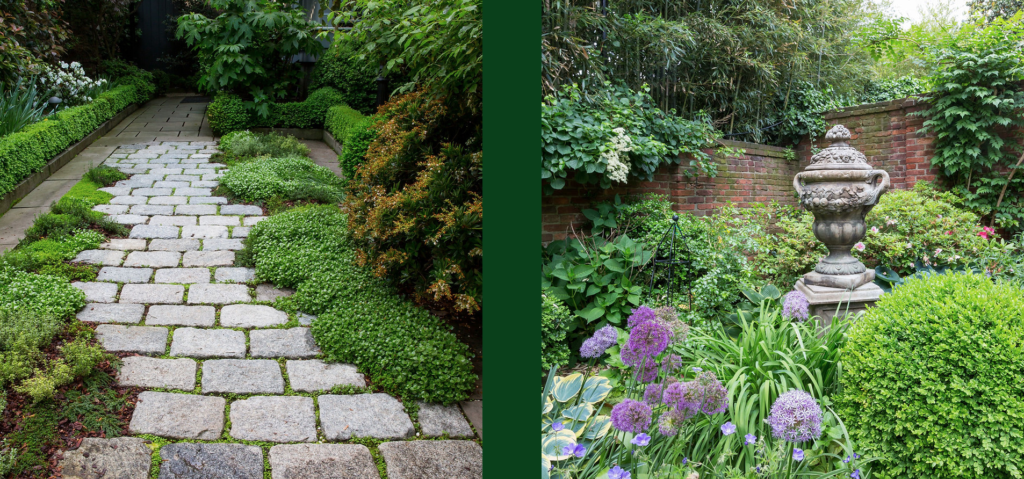92nd Georgetown Garden Tour, Saturday, May 7
By • May 4, 2022 0 2358

Does a flower bloom when there’s no one to see it? Of course, but it’s such a pleasure to see those pale yellows and vibrant reds and dusty pinks at the Georgetown Garden Tour, which is returning on May 7 after two years of Covid shutdown. The tour features eight private gardens from Washington’s most historic neighborhood and, for us locals, an unparalleled chance to snoop around the neighbors’ property.
“I sense a lot of pent-up enthusiasm for something like this that celebrates gardens, being outside, Georgetown specifically, and a sense of community more generally,” says Laura Will, one of the tour’s co-chairs. “So many of my friends have told me they just can’t wait!”
This year’s gardens are on the east and west sides of Wisconsin Avenue, Georgetown’s great divide, and range from the majestic to smaller, cleverly designed spaces. One garden, near Dumbarton Oaks, features big Belgian block stones in a pathway edged with low, trimmed boxwoods. (“Belgian block,” is what my mother called these stones, and while she might have simply made the name up, she knew a lot about gardens and the stuff that goes in them).
Another garden, not far from the hustle of M Street, is a quiet, disciplined place, which plays with the repeated use of certain materials. It boasts a water feature that slices the space in half, and is a cool, quiet place on a hot summer day.
Yet another has a big, old fashioned swimming pool, the kind movie stars loll around in as they sip gin and tonics on a sultry afternoon (Georgetown might not have a lot of movie stars, but we’ve got the sultry afternoons).

Gardens on the 2022 Georgetown Garden Tour.
A fourth garden is part of a place with many names, Quality Hill, the Pell Mansion, and now the Calvin Coolidge Foundation. Built in 1797 by John Thomson Mason, George Mason’s nephew, it used to be owned by Rhode Island Senator Claiborne Pell. Pell helped create the Pell Grant, which offers financial aid to college students. The home is now owned by the Coolidge Foundation, which also funds college students as part of its work.
“Covid and silver linings don’t readily go together, but public and private green spaces all over the world did receive new focus and energy in these last two years. Georgetown’s gardens were no exception to that,” says Liz Evans, who is a co-chair of the garden tour. “Behind the walls of these splendid historic homes — one gracious Georgian mansion has a sub-basement that once held an atom bomb shelter! — are gardens that are each striking in their own way and as eclectic as Georgetowners themselves.”

Gardens on the 2022 Georgetown Garden Tour.
This is the Georgetown Garden Tour’s 92nd year, and two years-off means those secret places behind the high walls have grown ever lusher and more beautiful. Four of the gardens have never been on the tour before, and the four others are longtime favorites for their innovative approaches to city living.
The bigger gardens soothe with their expansiveness and scale, especially in such a closely packed neighborhood, and the smaller ones dazzle with their clever use of small spaces and high design.
Perhaps best of all, for the folks who live, work, and visit Georgetown, the tour raises money for local green spaces, parks, and public gardens. Recent beneficiaries include Book Hill Park, Tudor Place’s gardens, Trees for Georgetown, the rose garden at Montrose Park, Rose Park, Volta Park’s Habitat Garden, the Dumbarton Oaks Park Conservancy and Georgetown Waterfront Park.
The gardens will be open 10 a.m. through 5 p.m., Saturday, May 7, rain or shine. Tickets are $40 before April 30 at www.georgetowngardenclubdc.org. On May 1, the ticket price rises to $45 on the website, and on the day of the tour tickets will be sold at Christ Church, 3116 O St. NW.

